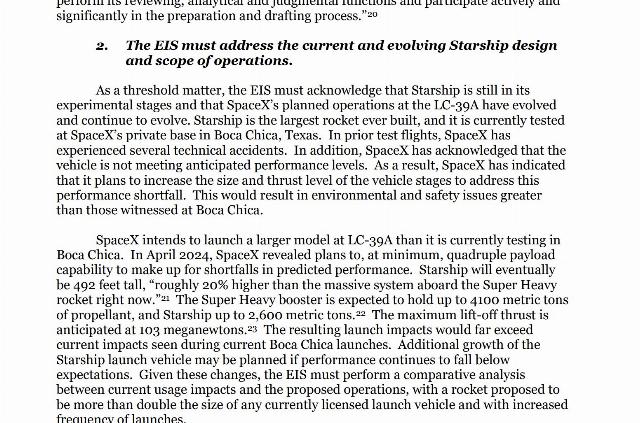United Launch Alliance and Blue Origin, two major NASA partners, have filed documents with the US Federal Aviation Administration asking them to restrict SpaceX's Starship flights from Florida. These launches are necessary for the Artemis III mission, the first human landing on the moon in the 21st century. At the same time, the third partner of the National Aeronautics and Space Administration of the United States, which is developing extravehicular spacesuits, said that he would not continue working for the same money, because the task turned out to be more difficult than he thought.
The United States is actively working on the return of astronauts to the moon. NASA does not want to rely on SpaceX technology, but it cannot completely abandon it. In particular, the US National Aeronautics and Space Administration does not have a landing module for landing on a natural satellite of the Earth. Developing it by traditional NASA partners would require an indefinite number of years and money. Because of this, in 2021, the agency decided to use Elon Musk's Starship as a lander.
In order not to leave other NASA suppliers without orders, flights to the Moon will be performed on their rocket (SLS) and ship (Orion). Each launch of such a pair costs $4.3 billion — many times more expensive than NASA will pay for one launch of a much more massive Starship. In lunar orbit, Orion will dock with Starship, one of the ship's crew members will remain in orbit, and an African-American and a woman will land on Starship.
Since Starship is not a lunar module, but a very large carrier and a ship (with a sealed inner volume of the ISS), in order to reach the Moon, it needs preliminary refueling in Earth orbit. Their number is unlikely to be less than a dozen, and according to some estimates — at least 20. To confidently provide so many launches in a short time, SpaceX needs two launch pads.
One of them — Starbase near Boca Chica - is already working. The second one, at site 39A in Florida, is still being retrofitted by Elon Musk's company to suit its needs. SpaceX has announced that it will conduct 44 Starship launches per year from there already in the first stage. This is many times more than the total number of space launches, for example, in Russia.
Now Jeff Bezos' company (Amazon owner) Blue Origin and United Launch Alliance (the "daughter" of Lockheed Martin and Boeing) have sent documents to the US Federal Aviation Administration demanding restrictions on Starship flights from Florida.
Blue Origin stated in the documents [...] : Starship allegedly contains up to 5,200 tons of liquid methane, the threat of explosion of which requires a protective zone of such size that the launch pad of Blue Origin itself near Cape Canaveral in Florida will be under attack. Some environmental problems are also mentioned. In this regard, the number of Starship launches was proposed to be reduced from 44 per year to an unnamed number at which they "will have minimal environmental impact." Logically speaking, such an impact would be minimal if there were zero launches.
From a technical point of view, the Blue Origin document is erroneous: Starship, even in the third version, scheduled for use from Florida from 2025, weighs only 7,000 tons, of which methane accounts for about a couple thousand tons (the bulk of its fuel is oxygen). That is, Jeff Bezos's company has significantly overestimated the volume of liquid methane on a competitor's rocket.

The United Launch Alliance in its document did not allow the same gross inaccuracies as Blue Origin. Probably, the paper was first shown to a technical specialist there
Image source: ULA
A similar document from the United Launch Alliance does not contain the same gross errors — the tonnage of Starship fuel is indicated correctly there. But the message is similar: since the SpaceX carrier is many times superior to the largest rockets of the past that ever existed, their frequent launch is harmful to the environmental situation and creates risks for neighboring launch sites.
Recall that the United Launch Alliance today sends something into space ten times less often than SpaceX. Blue Origin has not performed a single orbital space flight at all, although the company was founded two years earlier than SpaceX.
Elon Musk (in a social network belonging to him) commented on the actions of competitors in his usual manner: "Clearly an insincere document. It's not very cool of them to try (for the third time) to hinder SpaceX's progress with the help of legal trickery."
Social media users are already spreading memes that Blue Origin, being two years older than SpaceX, has not yet made a single orbital launch, but it is doing everything it can to interfere with these SpaceX launches
Image source: Starecat.com
Note that site 39A was once created for the C8 Nova rocket, which, according to the project, should be noticeably larger and more powerful than the Saturn 5, which flew to the Moon. Thus, Starship uses the site from which it was originally planned to launch super-powerful missiles.
The appeals of SpaceX's competitors to the authorities pose a threat of disruption of Artemis III: without a second site, any malfunction on the first one during refueling launches can disrupt the entire mission. At the same time, another problem arose with the return to the Moon: the Collins company, which creates extravehicular spacesuits for NASA with a potential payment of up to $ 3.5 billion, refused to continue work. She asks for either more money or to shift the tasks for her product. Axiom, the second spacesuit company, has not yet passed a critical stage in the development of its product.

